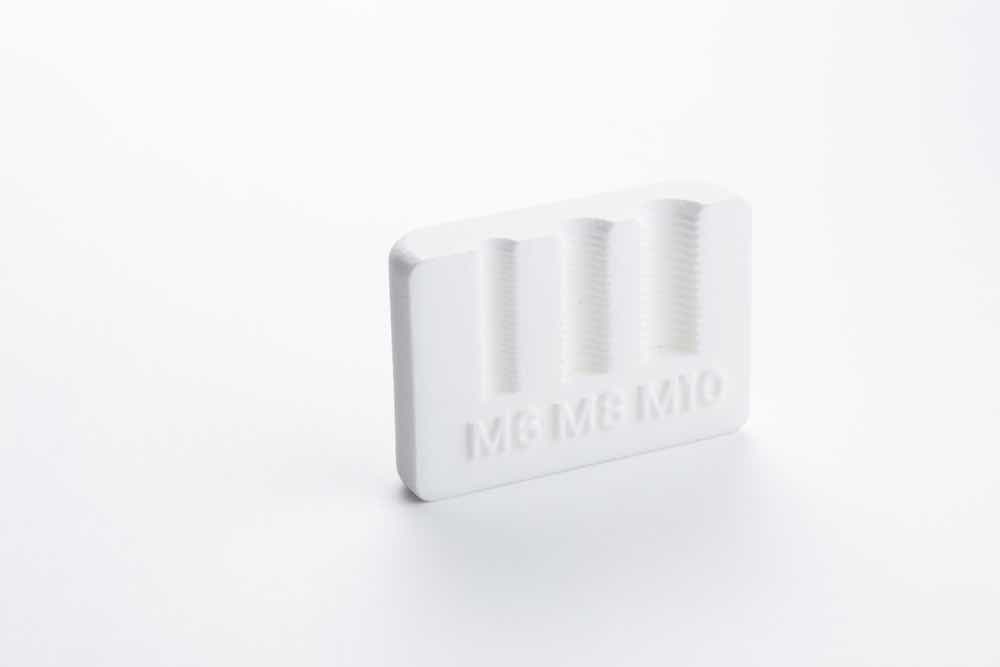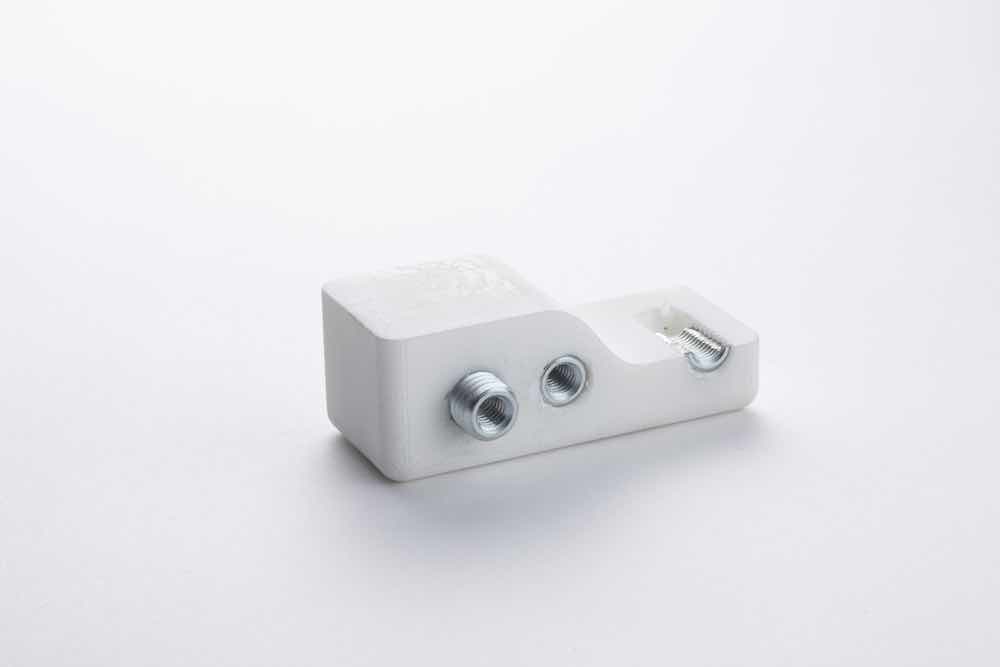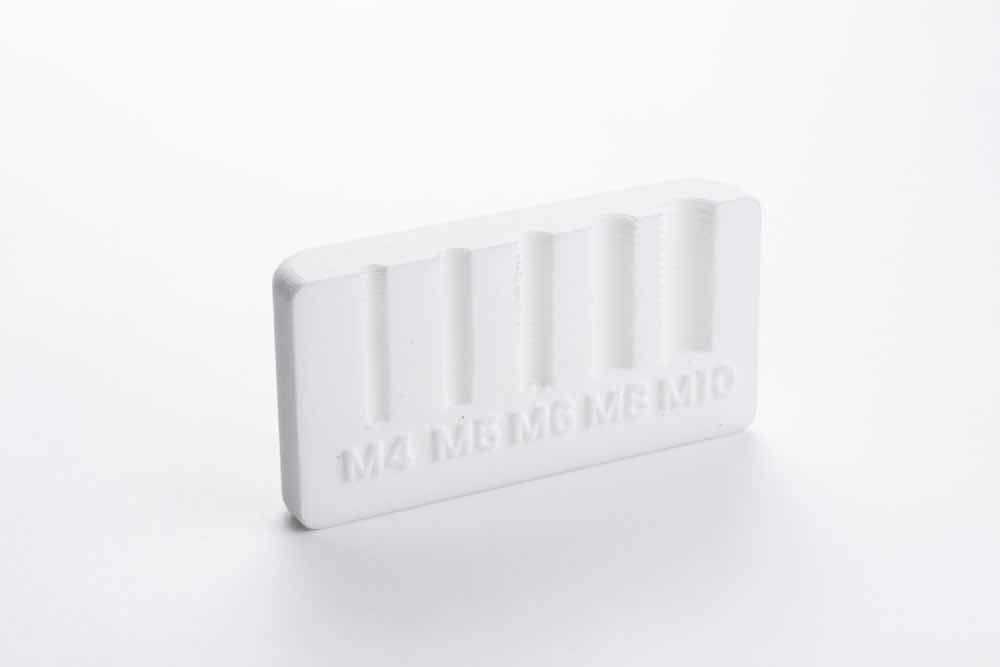Threads
In short
If you want to use screws in your design, you need to create thread. There are multiple ways to include thread in your design: printing it, tapping it, or using inserts.
Finished your design? Make sure to check:
• Include the thread sizing on your technical drawing and specify if you want inserts or tapping.
Printing thread
SLS enables the printing of thread. It does not require extra action from the printer and is one of the great examples of free complexity in 3D-printing. To successfully print thread, use a minimum of M8 thread.
The pitch on M8 thread is 1 mm, which means the wall thicknesses are suitable for SLS printing. Thread is most accurate and strong when printed in the Z/Height direction. To print the thread, it needs to be completely modeled in your CAD file.
Tapping thread
For fixtures that need fastening and loosening often, without the need of a lot of force, we recommend tapping thread. At Parts on Demand, we offer the services of tapping for you for a small additional fee.
Our tapping service saves you time as well as the risk of faulty tapping and gets you parts that are ready to be assembled. If your parts require this service, please include a hole with standard pre-drill size and specify the sizing and positioning of the thread on your technical drawing. Tapping is only possible for internal thread.
Inserts
If you need to use bolts that are under a lot of force and require regular tightening and loosening, we advise to use inserts. We can place these inserts for you if you include the specified holes in your design. We use the Fabory 302 line. If your part requires inserts, please specify the size, insert material and positioning on your technical drawing.
Thread inserts: Diameter x Min. hole depth
- M3 4,7 mm x 8 mm
- M4 5,9 mm x 10 mm
- M5 7,2 mm x 13 mm
- M6 8,8 mm x 17 mm
- M8 10,8 mm x 18 mm
- M10 12,6 mm x 22 mm
What’s inside our guidlines?
Our guidelines are filled to the brim with useful information on how to design your models, the newest technologies and specifications for your parts!


